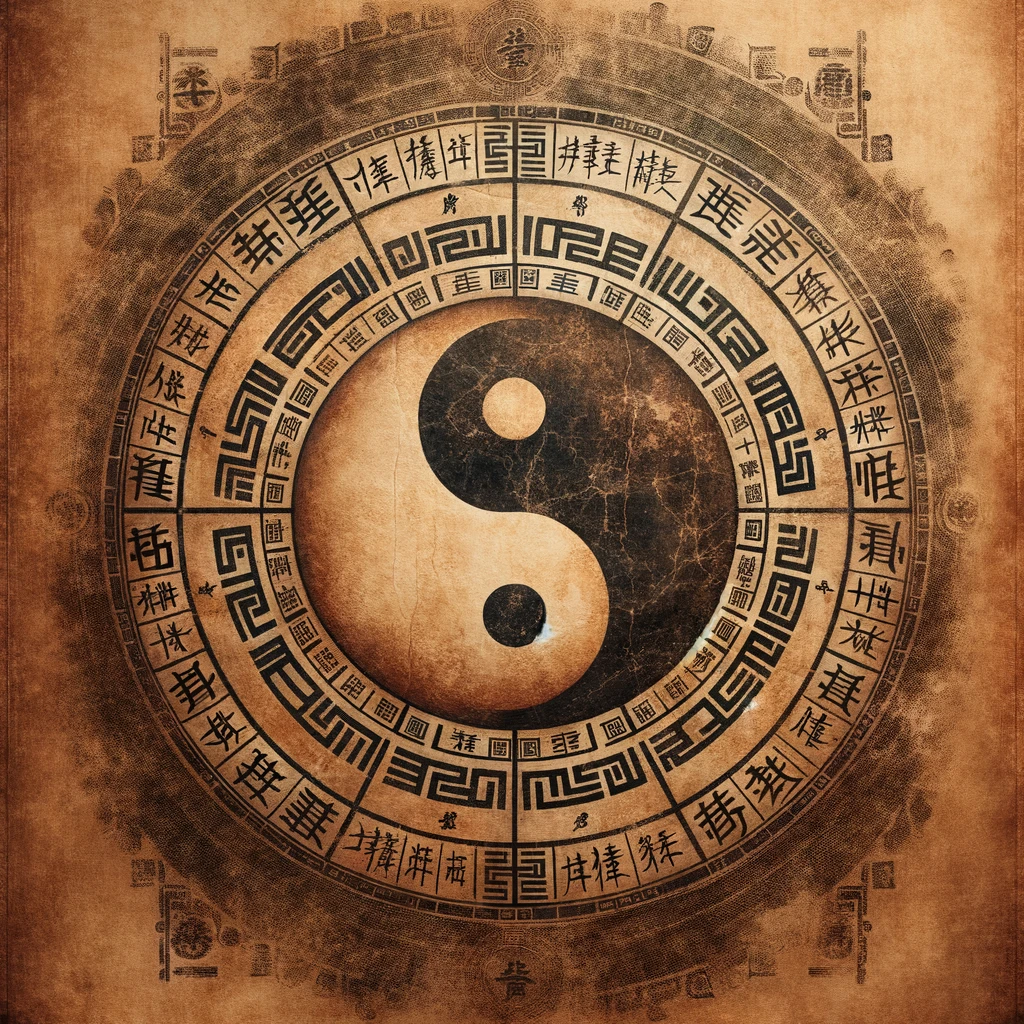The Yi Jing, also known as the I Ching or Book of Changes, is a profound cornerstone of Chinese culture and one of the oldest of the Chinese classics. Rooted in antiquity, the exact origins of the Yi Jing are shrouded in mystery, but the text is traditionally believed to have been compiled around the end of the Western Zhou period (around 1000-750 BCE). This makes it not only a pivotal work within the canon of Chinese literature but also one of humanity’s oldest books.

History
The Yi Jing's historical significance is multifaceted. It served as a manual of divination originally, allowing users to navigate the uncertain and ever-changing aspects of life. However, its reach extended far beyond mere fortune-telling. The text became embedded in the Chinese intellectual tradition, influencing philosophy, literature, and statecraft. Its concepts of change, balance, and transformation provided a framework through which scholars and laypeople alike could interpret the ebbs and flows of existence.
Throughout its history, the Yi Jing has been enriched with commentaries, most notably the Ten Wings, which are attributed to Confucius and his disciples. These commentaries expanded the text’s scope, linking its divinatory system to a broader philosophical worldview, thereby integrating it into the educational and moral fabric of Chinese society.
As one of the Five Classics of Confucianism, the Yi Jing's status as a vital text in East Asian thought cannot be overstated. It is not merely an artifact of the past but a living document that continues to evolve and adapt to the contemporary world. Its approach to understanding the natural order and human affairs through the lens of change and adaptability remains relevant, providing a timeless tool for navigating life’s uncertainties.
Components of an Yi Jing Reading
The Yi Jing, or Book of Changes, is composed of several core elements that interlock to form a complex system of divination and philosophical thought. At the heart of the Yi Jing are the trigrams and hexagrams, which are symbols representing various elemental and existential concepts.
Trigrams
There are eight trigrams (called "bagua" in Chinese), each made up of three lines that can be broken or unbroken. The unbroken lines represent Yang, the active, masculine, and bright principle, while the broken lines symbolize Yin, the passive, feminine, and dark principle. Each trigram has a name, attribute, significance, and a natural element associated with it, such as water, fire, thunder, or wind. The trigrams are considered the basic components of the universe in the Yi Jing's cosmology.

Hexagrams
By combining these trigrams, one can form 64 different hexagrams, which are stacks of six lines (either broken or unbroken). Each hexagram is a unique permutation of Yin and Yang lines and is associated with a particular image, judgment, and text that offer insights into life's situations. The hexagrams are the core divinatory symbols of the Yi Jing, and each one contains a main text (the judgment) and a commentary for each line, which can change from broken to unbroken and vice versa.

Use for Divination
To consult the Yi Jing, one traditionally uses a randomizing method to select a hexagram and receive guidance. This can involve tossing coins, counting yarrow stalks, or other methods. Each method leads to the construction of a hexagram in a dynamic manner, reflecting the ever-changing nature of reality. The hexagram is built from the bottom up, with each line representing a specific moment in time.
As the hexagram is built, each line can be "moving" or "static," indicating change or stability in the situation in question. A moving line means that the line changes from Yin to Yang or vice versa, suggesting a dynamic situation, while a static line represents steadiness. When a line changes, it transforms the original hexagram into a related hexagram, providing a further dimension to the interpretation.
The text associated with the hexagram and its changing lines are then read to provide insight. This text often contains analogies and metaphors that require reflection and interpretation to apply to the specific context of the query. The philosophy behind this is that by engaging with the symbols and texts, the individual connects with the deeper rhythms of the cosmos, finding guidance that aligns with the natural order of things.
The composition of the Yi Jing is thus not just a divinatory tool but also a rich tapestry of ancient wisdom, offering philosophical guidance on leading a harmonious life in accordance with the principles of change and balance.